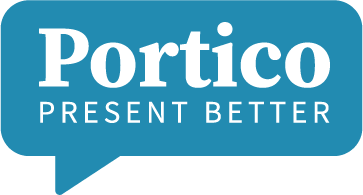Meet David Saltzman, a communications expert and former insurance industry and association executive who has given more than 1000 presentations, primarily in the insurance and healthcare sectors. He began his career in radio at WAIC in Springfield MA, which shaped his approach to developing and delivering presentations. As Principal of The Saltzman Group, David advises clients on transformation strategies, helping executives and clients get “from here to there.” Given his experience translating complex information in business-to-business settings, we wanted to learn more about what works (and what doesn’t).
Q: How has your background in radio shaped your approach to presentations?
In radio you have to paint word pictures; you create storyboards and constantly hone your language. Without any visuals you rely on your voice, microphone and audio board to connect to listeners. Orson Wells didn’t have visuals when he transfixed the country with his “War of the Worlds;” there was no PowerPoint or Prezi. Had I not done radio first, my entire process would be very different. To extent that my talks resonate, I think it’s because of my early training in that one-dimensional universe.
Q: What makes for a great presentation?
Tell a story, and make the most of the medium that you’re presenting in. All too often speakers get caught up in the minutia of a product or service offering. These details are great for a second or even third meeting, but the first goal is to get buy-in for the concept, to answer the “why.” To do that effectively you’ve got to appeal to your audience’s emotion through an effective story. You can’t get that from product features or financial statistics. Depending on the format, certain graphics and visuals that play well in a big room just don’t have the same impact in a smaller room or video conference. Recognize the impact of your body language; so much of the meaning that people take is not in the words that you say, but in your posture and facial expressions.
Q: What’s your favorite presentation?
I’m a bit of a TED Talk nerd, but my favorite is probably Simon Sinek’s “Start with why.” This approach informs whole story metaphor; what is the emotional center of what I want to provide?
 When David launches his podcast series this spring, we’ll provide an update on his work and a link to the interview series. Many thanks to David for sharing his expertise with the Present Better community.
When David launches his podcast series this spring, we’ll provide an update on his work and a link to the interview series. Many thanks to David for sharing his expertise with the Present Better community.


